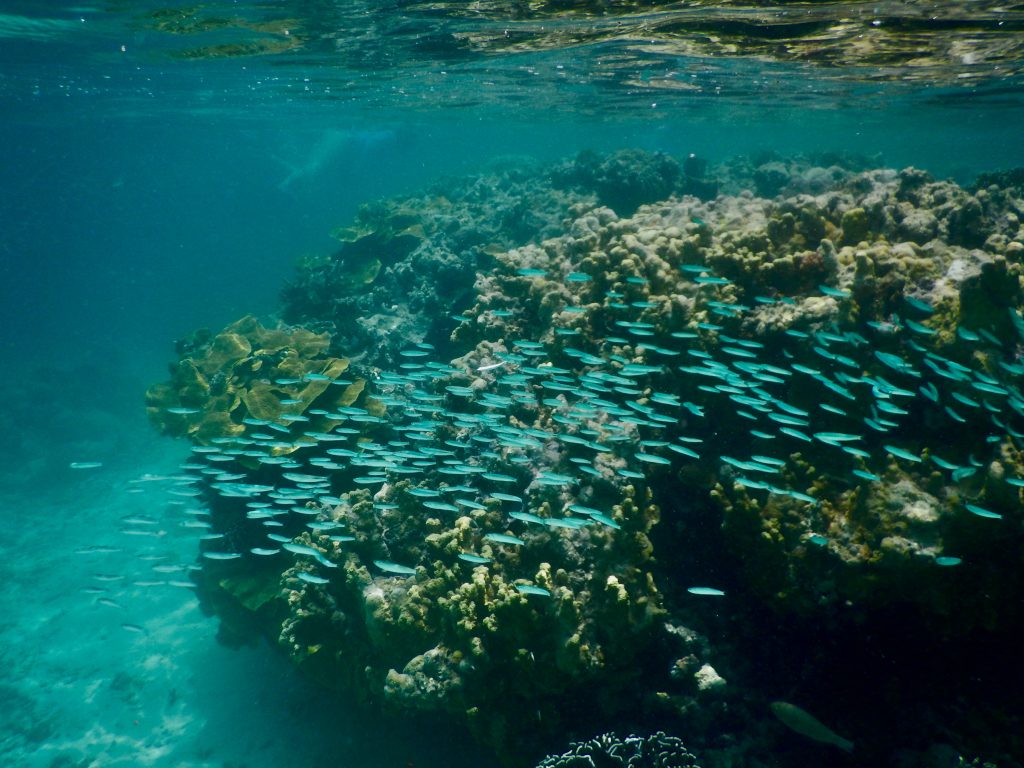
FEDERATED STATES OF MICRONESIA
Given the fact that a faraway country like Germany had send its navy on a months-long voyage over two oceans already in the early 1900s, to implement its colonial mania and to incorporate Micronesia into its colonial possessions (until the Japanese took it away in 1914), getting to the four Federated States of Micronesia nowadays proved like a cakewalk. After a flight via Hong Kong and Guam my plane was descending into beautiful Chuuk Lagoon: Under me dozens of tiny atolls amid the deep blue of the South Sea, framed by a stunning theatre of green hills on well-shaped islands. Albeit the view from my window seat was mesmerizing, it was a view on the biggest graveyard of ships in the world: The sheltered lagoon had been Japan’s main naval base in the South Pacific in World War 2. In a fierce battle in early 1944, American carrier-based planes sank 50 Japanese warships and destroyed 275 aircraft.
My aircraft in 2019 took me from Chuuk to the next Micronesian state, Pohnpei, home to the world’s only ancient city built on a coral reef, Nan Madol. Pohnpei became my favourite Micronesian island, crowned by dramatic peaks with amazing views over lush rainforest and the outer reef. I circled the island on foot, past cute white churches and little houses. Everything, even the locals chilling the humid heat away in their ubiquitous hammocks, was mostly hidden in deep tropical foliage. I felt I had entered a world entirely in slow motion, not a single car moved, even the dogs were to lazy to bark. On my walk I did not encounter any sandy beaches to speak of. Instead Pohnpei was almost entirely surrounded by a labyrinth of mangroves. In a mix of saltwater and freshwater the mangroves mirrored with a great interplay of shade and light. The mangroves offered great shoreline protection and even better, were the habitat of the world’s largest crab: the mouth-watering Mangrove Crab. I ordered it for dinner, and I could not get enough.
However it’s not crabs, but pigs which are the most prized animals on Pohnpei. They are seen as an economic asset as well as a prestige symbol at traditional feasts. Wherever I saw a party on Pohnpei, the feast was not complete without the slaughter of one or more pigs. There are obviously 6000 pigs on Pohnpei, and they are only only butchered on special occasions. At large feasts, pigs are baked in earth ovens. The chief of the village receives the head, while the second-ranking chiefs receive the hindquarters and the lower chiefs get the rest. Me and the other commoners, got nothing. It sounds strange to cross two oceans just to see how pigs are butchered.
